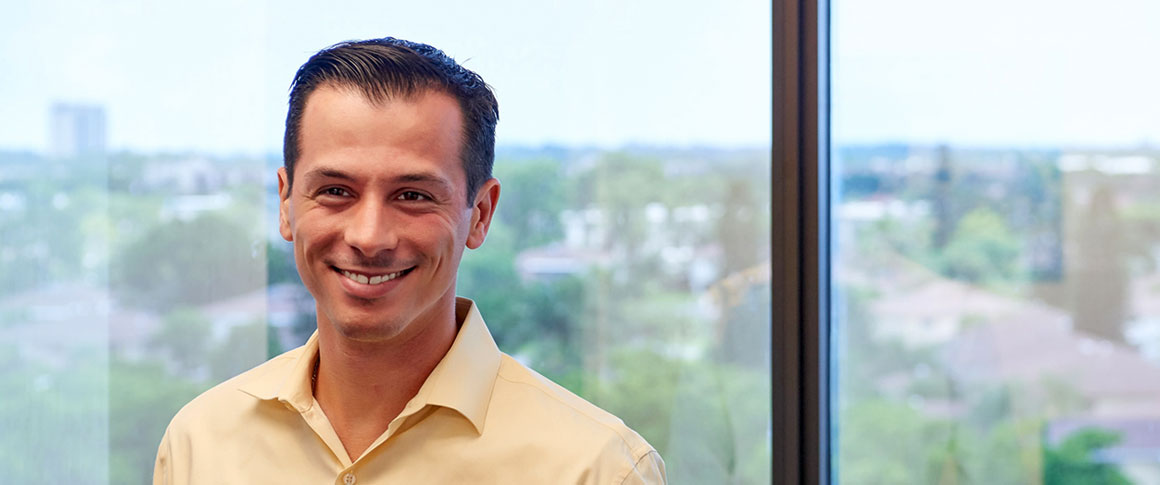Florida architect Alex Rios, AIA, NCARB, CDT, LEED AP BD+C, shares how he powered through the Intern Development Program (IDP) and how volunteering led to his first job.
Why did you want to become an architect?
I was determined to become an architect after having a brief summer internship with a local firm midway through high school. I was attracted to the amount of creativity expressed in many of the projects, as well as how many architects were sole practitioners.
Tell us about some of the ways you earned IDP experience.
I completed the IDP and ARE in 2012, just under two and a-half years after graduating from the University of South Florida (USF). During my first few years at USF, the Great Recession was still going strong, and taking licensure seriously was the first step in gaining a competitive edge. I started the IDP one year after enrolling in the architecture program, picking up hours for volunteer work, continuing education, and an internship. By working with my supervisor to identify ways to gain hours outside of employment, and how to address each experience setting, I was able to complete the IDP quickly. Prior to starting the ARE, I received the CSI–CDT and LEED AP certifications, which proved to be very helpful for the exams. I took my first ARE the summer after graduation, and then took subsequent exams in one to three month intervals, depending on the difficulty of the exam.
How did you stay motivated to finish the ARE?
I was fortunate to learn a very strong work ethic through my family—especially my mom, who worked two jobs to support my family and put me through school. Staying motivated came naturally, as it was my plan from the beginning. Pursuing certifications and licensure soon after graduation was helpful in that I continued to maintain the same work regimen I had while in architecture school. Despite this, I did fail several of my first few exams.
After diversifying the study material, scheduling exams early in the week, and surrounding myself with a stronger support group, the remaining five exams all ended with passing results. Some friendly competition with a former classmate, Emily Pano, to see who could get licensed first was also motivating. I’d like to give special recognition to Linaea Floden, David Thaddeus, and AIA Tampa Bay. These people have shown tremendous dedication to helping candidates through the licensure process, and I likely wouldn’t have completed it as soon as I did without them.
Do you have any networking tips for emerging professionals?
Networking has been crucial in my early career. In fact, I know I would not be where I am today without it. Soon after graduation, I progressively became more involved with AIA Tampa Bay, later serving as associate director for about one and a-half years. Serving on the board aligned with many of my career goals, and I was motivated to organize several events—including ARE study groups, networking opportunities, firm crawls, and hard hat tours. Volunteering helped me land my first two jobs, develop strong relationships with local leaders, and connect with others going through the licensure process.
Your local AIA component is also a tremendous resource, and I would encourage expanding your network outside the profession. Regardless of the organization, be sure to pursue opportunities that align with your career goals and where you see yourself in the future.
How does having an NCARB Certificate distinguish you from other architects?
Having an NCARB Certificate shows that I didn’t just stop at licensure and made the extra effort to facilitate reciprocity in other states. At the Tampa office of Studio+ Architects, there are plans for me to sign and seal documents in the near future. With the growth the company has experienced in recent years, the Certificate allows me to continue serving in that capacity regardless of project location.
What’s the best career advice you’ve ever received?
Never undervalue yourself, know what you bring to the table, and understand that there’s plenty left to learn. Many architects don’t appropriately value their skillset, particularly recent graduates. “Despite recent improvements in the business environment for firms, compensation levels have remained relatively flat,” according to the AIA Foresight Report. It is critical that architects understand their value propositions and not compete on a commodity basis. By the same token, it’s extremely exciting to see the vast amount of avenues you can take in this profession. It’s important to carve your own path, learn as much as you can, and make the career you dream of a reality.
